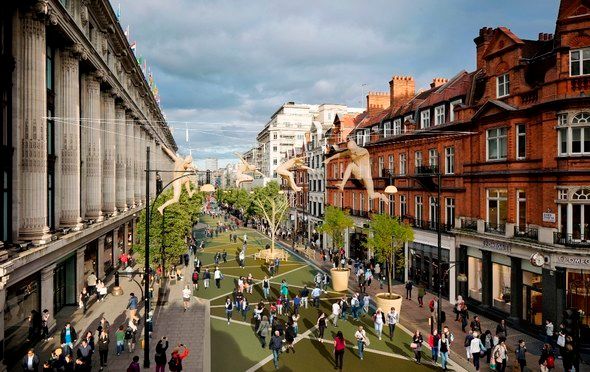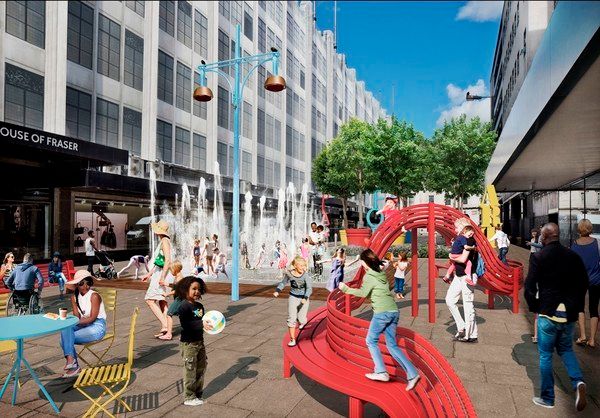Each year, some 3.4 million shoppers flock to London’s Oxford Street in the week before Christmas. With the January sales upon us, the crowds continue. Proposals by the Mayor of London to see Oxford Street go vehicle-free could mean that by Christmas next year, the street’s landscape will be very different.
Like high streets across the country, West End stores need to adapt in the face of online competition and out of town shopping centres. Perhaps there is no better manifestation of this change than the Mayor’s proposal to pedestrianise Oxford Street, starting with the Western section which is due to go vehicle-free by the end of 2018. The first phase of consultation showed 62% of respondents support its transformation. The final consultation closes on Wednesday, so there’s still time to respond and say yes to a vehicle-free Oxford Street.
The New West End Company estimates there will be an additional 60 million visits to the West End each year once the Crossrail Elizabeth Line opens, adding to the 200 million visits already made. This is a critical juncture. Without a significant shake up, overcrowding on Oxford Street will be pushed beyond breaking point.

A pedestrianised Oxford Street will reflect the changing face of modern retail and ensure this iconic street can continue to thrive, both as a retail destination and as a source of local employment – with retailers on Oxford Street responsible for an additional 4,700 seasonal jobs.
John Lewis’ first shop opened on Oxford Street over 150 years ago and remains their flagship store. They have welcomed proposals to create a traffic-free zone and to improve the public realm in and around Oxford Street.
Karen Lord, head of branch at John Lewis Oxford Street believe the plans “offer a once-in-a-generation opportunity to transform Oxford Street from a busy thoroughfare into a pedestrian-friendly environment, reinforcing this iconic street as one of the best places in the world to shop”.
Retailers like John Lewis recognise the importance of the ‘pedestrian pound’. When you create a place that is safe, attractive and enjoyable, people are more likely to linger. People who linger generally spend more. Living Streets commissioned independent research company Just Economics to help us build the business case for better streets and places. The effect of improving streets on property prices and rents was well documented, with a reasonable increase being between 10 and 30%. The Pedestrian Pound report revealed that well planned improvements to public spaces can improve footfall by up to 40%, retail footfall by about a third and retail turnover by up to 25%. Evidence showed that pedestrians and cyclists spend more over a week or month than other shoppers – because they stay longer and visit more often.
Karen Lord continued, “If we get the detail right, creating traffic-free zones on Oxford Street will bring significant benefits for our partners, our customers and our business.”
Cities around the world are becoming increasingly convinced by the business case for reducing car use in their centres and creating more attractive places to walk around. Largely gone are the days when building a thriving economic city was synonymous with major road building. Instead, businesses increasingly wish to be located in centres with good public transport and attractive streets for walking.
A vehicle-free Oxford Street opens up new possibilities and flexibility not currently on offer. At present, the majority of Oxford Street is classed as A1 retail shopping. Without motor traffic, a more immersive experience is possible: cafes with on-street seating, art installations - an all-round more attractive destination.
Living Streets has always insisted that there should be good nearby access for buses, taxis and bikes, as well as improvements in the whole residential surrounding area, the key to which is a fundamental overhaul of bus routes, which TfL have now undertaken.
A vehicle-free Oxford Street has the potential to improve the experience of all visitors, workers and residents, setting a new standard for towns and cities across the UK.

